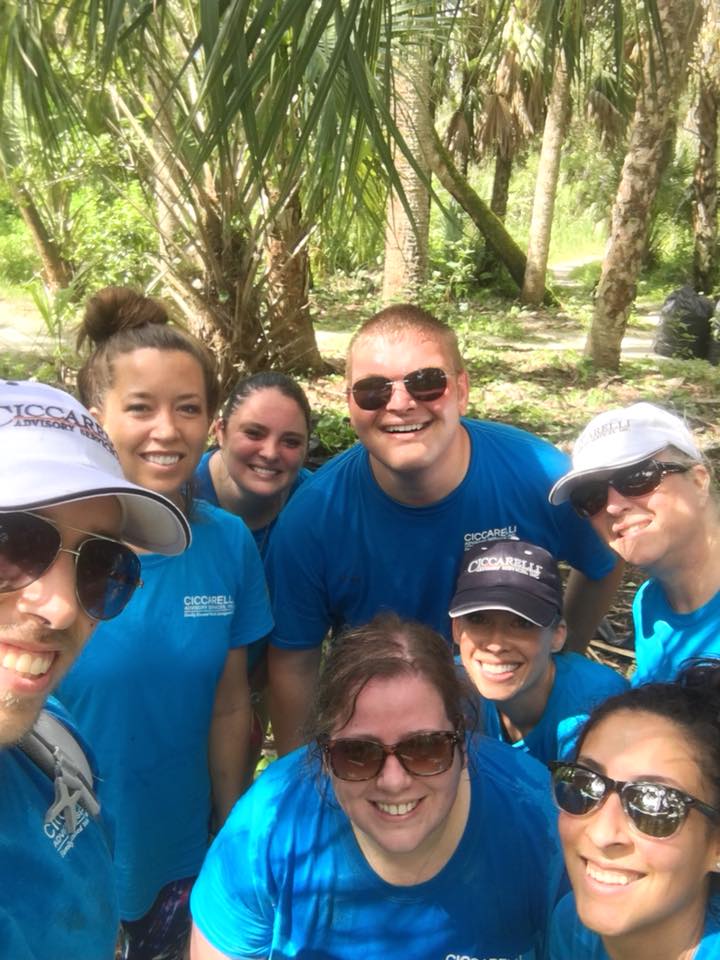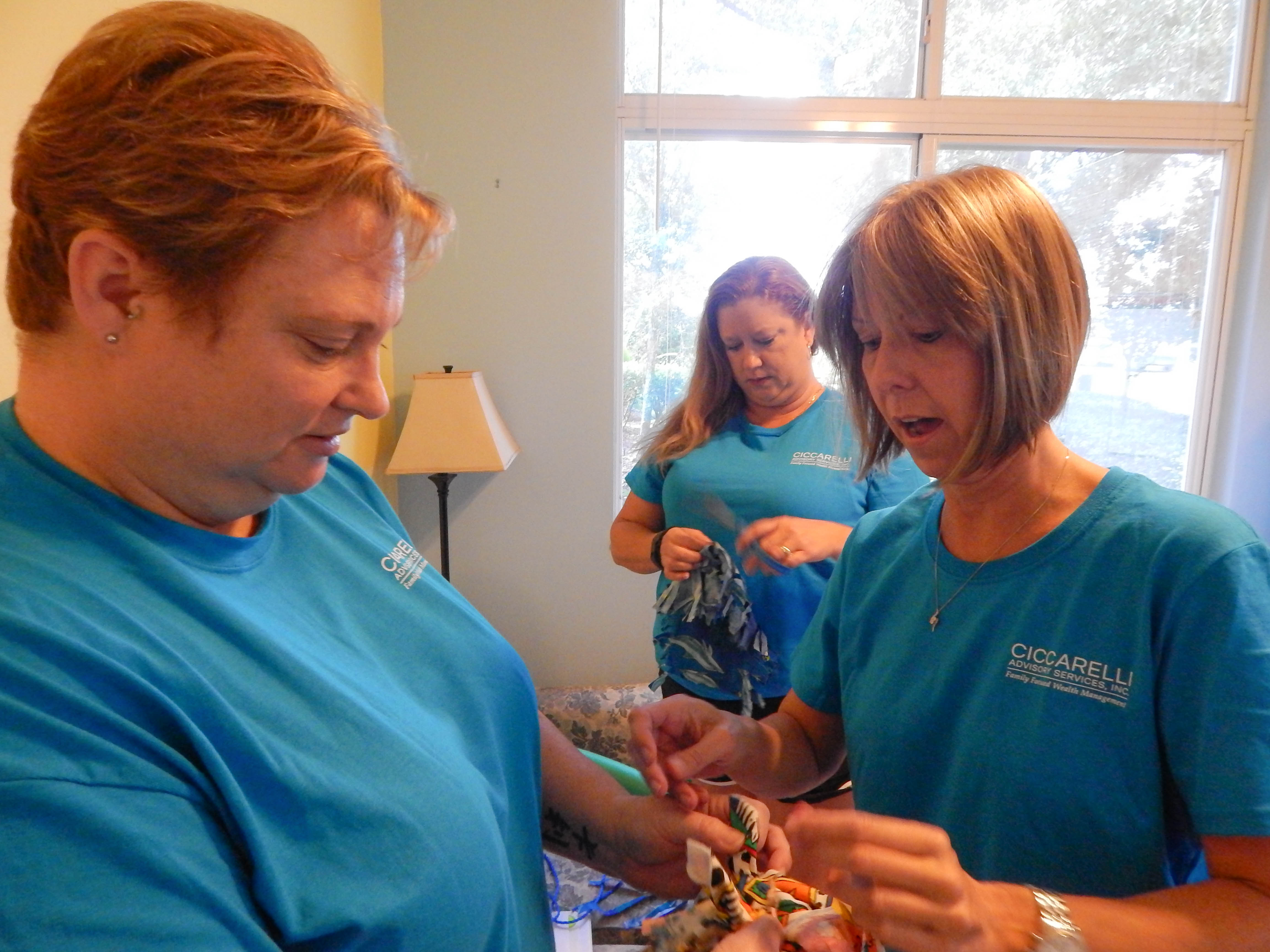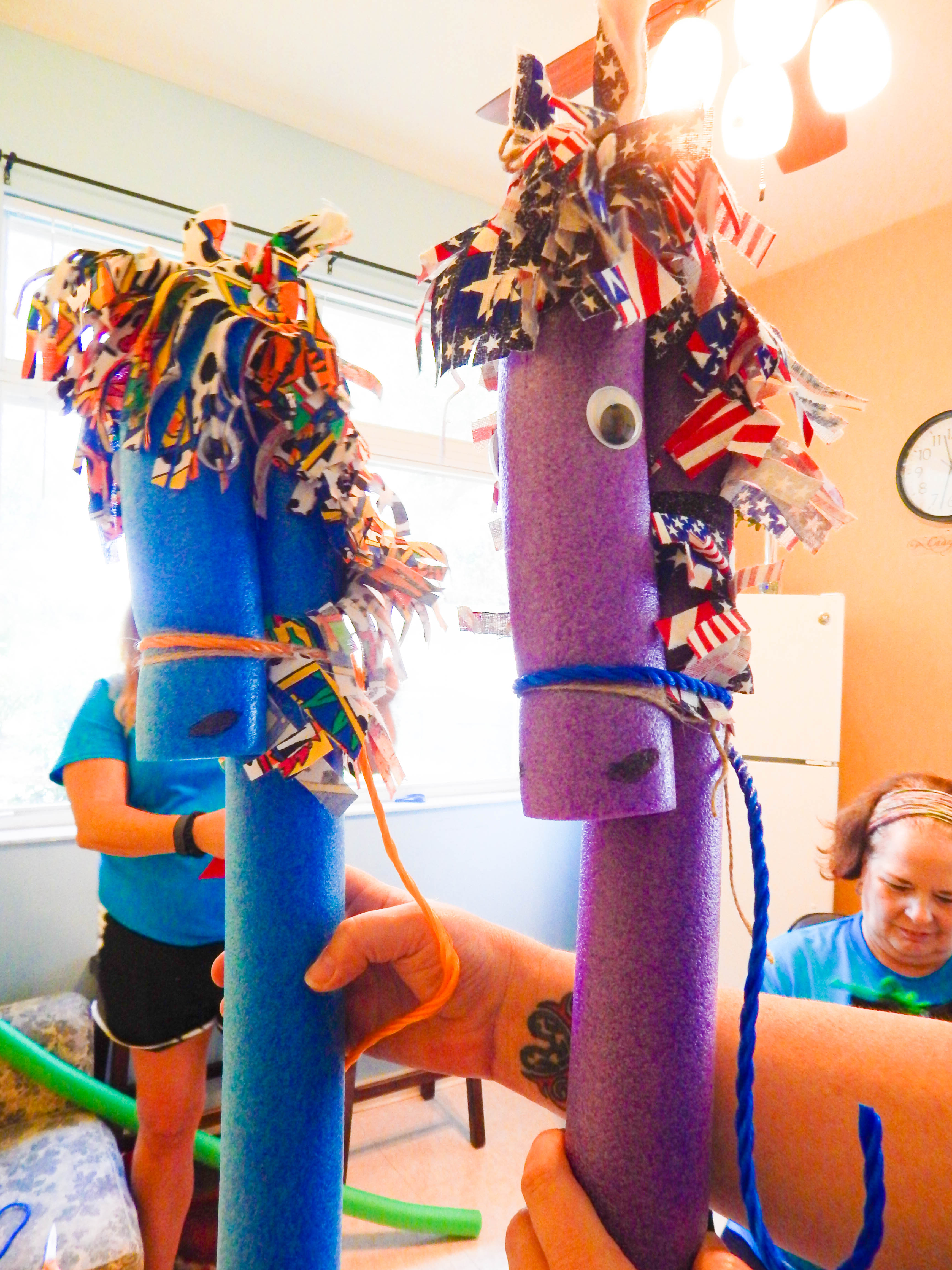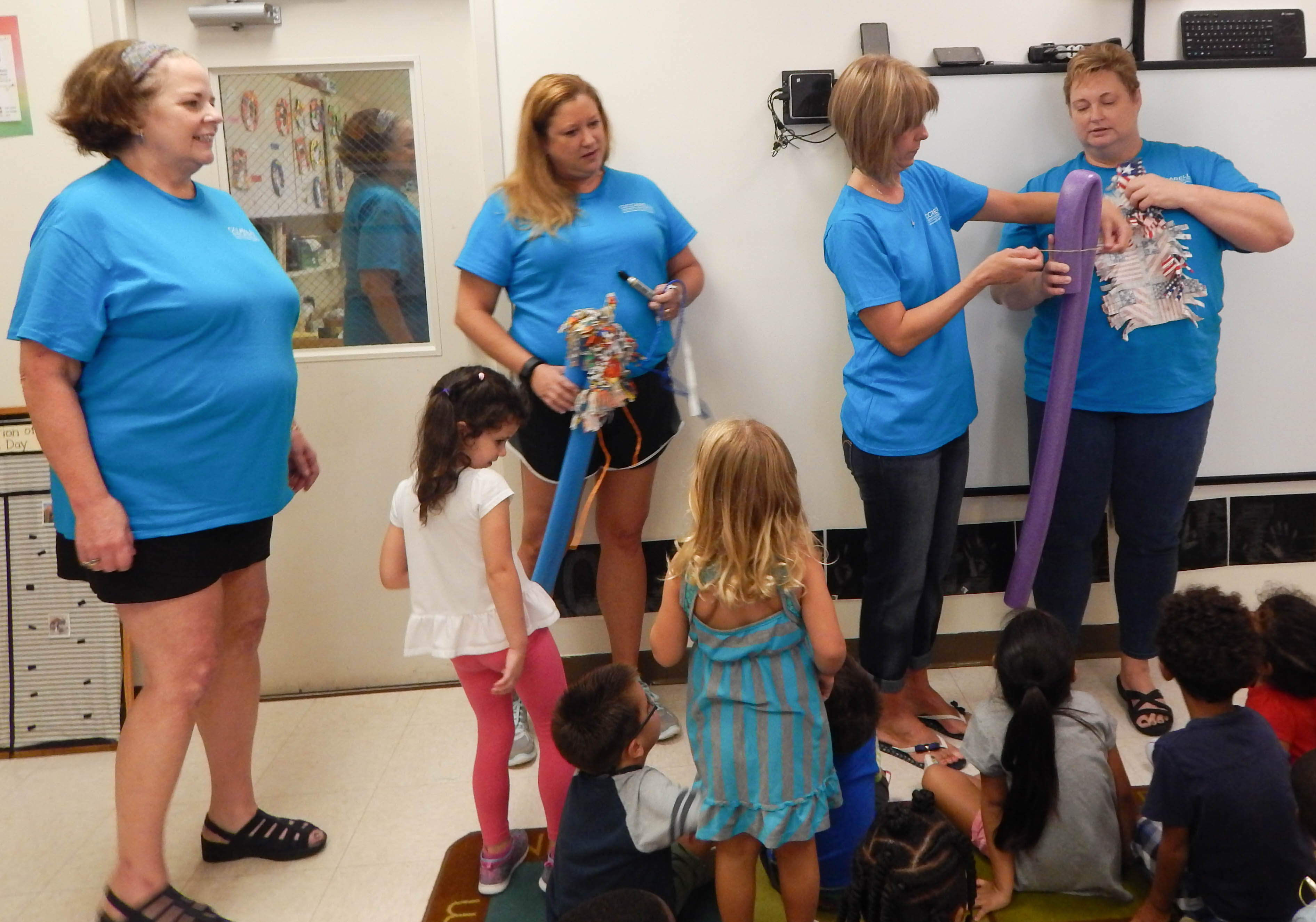CAS News
The 50/30/20 Plan
As a whole, our budgeting and saving habits could use some serious improvement.
A 2017 study by the Federal Reserve found that only 44% of U.S. households could cover a $400 expense with their personal savings. Whether it’s a visit to the emergency room, a necessary car repair, or even a hefty speeding ticket, more than half of American households would need to pay for these predictable expenses by accruing more debt.
There are a number of factors that have led to this widespread financial unpreparedness. Real income for wage-earners has stagnated since the 1980s, while average household student loan debt and credit card debt have dramatically increased. However, perhaps the primary cause of our poor saving habits is the lack of education surrounding personal financial management.
When done properly and consistently, budgeting can be the single most effective way to build your financial security. While most people understand the importance of sticking with a budget, the concept of “proper” budgeting can be hard to pinpoint. How much should you be spending and saving? Where do you even start?
Here is a simple yet effective tool to help you get on the right track: the 50/30/20 plan. In order to get started, track all of your living expenses for the previous month so you can get a feel for your “natural” spending and saving habits (contact your CAS advisor for our Monthly Spending Tracker to simplify this process).
With this foundation, you can start to put the 50/30/20 plan into action going forward.
Step One: Calculate Your After-Tax Income
Knowing your after-tax income – or take-home pay – is essential for determining your monthly budget.
If you are an employee with a steady paycheck, your after-tax income should be fairly easy to determine. Assuming you claimed the proper withholdings on your W4, most of your federal income tax is automatically deducted. In most cases, state and local taxes – as well as Social Security and Medicare – are deducted as well.
Look at your paystubs to confirm which of these taxes are automatically withheld. If health insurance, retirement contributions, or any deductions other than taxes are taken out of your paycheck, add them back to calculate your after-tax income.
If you are self-employed, your after-tax income equals your gross income less your business expenses (i.e. the cost of your laptop or transportation costs) and less the amount you set aside for taxes. You are responsible for remitting your own quarterly estimated tax payments to the government.
Note: Being self-employed means that you must also pay the self-employment payroll tax of 15.3%, which is double what you would pay in Medicare and Social Security taxes in comparison to an employee.
Step Two: Limit Your Needs to 50 Percent of After-Tax Income
Take a look at your Monthly Spending Tracker. How much do you spend on “needs” each month?
The basic necessities are more restrictive than many people realize. When we say “needs”, we mean any payment for a good or service that would severely impact your quality of life, such as:
Groceries
Housing
Utilities
Student loan payments
Health insurance
Car insurance
Car maintenance
Prescriptions
Personal supplies
The amount that you spend on these things should total no more than 50 percent of your after-tax pay.
In addition to the above list, some expenses can be considered needs to an extent. For instance, spending a bare minimum of clothing is necessary; but a $400 shopping spree is a want. Gas to travel to/from work is a need; the fuel used on a cross-country road trip is a want. The same is true of auto repairs: mechanical repairs are a need, but cosmetic fixes or enhancements are a want.
If you can’t forgo a payment such as a minimum payment on a credit card, it can be considered a “need as your credit score will be negatively impacted if you fail to pay. By the same token, if the minimum payment is $25 and you regularly pay $100 a month to keep a manageable balance, the $75 difference is not a need.
Step Three: Limit Your Wants to 30 Percent
Putting 30 percent of your money toward your wants sounds great on the surface. Say hello to beautiful shoes, a trip to Italy and swanky restaurants! Well, not quite.
The reality is that “wants” are not the same as luxuries. A want is considered to be any payment that you can forgo with minor inconvenience, including:
Cable/phone/Internet
Vacation/non-business travel
Pet expenses
Eating out
Entertainment/hobbies
Salon/spa services
Gym memberships
Home services (not utilities)
Personal gifts
Charitable giving
If you think you might be spending more than 30% of your income on wants, you are not alone. The 2017 Federal Reserve study also found that the average household spends nearly 50% of their annual income on goods and services that are beyond the basic necessities. Although there is a time and place for spending your “fun money” on the things you enjoy, the key is to keep it below that 30% threshold.
Step Four: Spend 20 Percent on Savings and Debt Repayments
You should spend at least 20 percent of your after-tax income repaying debts and saving money in your emergency fund and your retirement accounts.
If you carry a credit card balance, the minimum payment is a need and it counts toward the 50 percent. Anything extra is an additional debt repayment, which goes toward this 20 percent category. If you carry a mortgage or a car loan, the minimum payment is a need and any extra payments count toward savings and debt repayment.
Note: Find out if your employer offers a 401(k) plan. Most employers do, and some offer a substantial match for all of your contributions. This is a great way to build strong retirement savings, especially if you start early. Your CAS advisor would be happy to discuss the breakdown of where your assets are invested.
The 50/30/20 Plan in Action
As an example, say your total take-home pay for each month is $3,500.
Using the 50/30/20 rule, you can spend no more than $1,750 on your needs per month. You probably cannot afford a $1,500-a-month rent or mortgage payment – not unless your utilities, car payment, minimum credit card payments, insurance premiums, and other necessities of life combined are less $250 a month.
If you already own your home or you are locked into a lease, you’re pretty much stuck with that $1,500 payment. Consider relocating when your lease expires to make your budget more manageable or take a look at your other needs to see if there’s a way that you can reduce any of them.
How might you get back on needs costs? Consider shopping around for more affordable insurance, or transfer the balance on your credit card to a different card with a lower interest rate. Your goal is to be able to fit all these expenses into 50 percent of your take-home after-tax income.
Now you can spend up to 30% of your income – $1,050 per month – on your wants. You might consider doing without a few things and shifting some of this money to your needs column if you’re coming up short there. This would not necessarily be an indefinite shift, but a temporary means of getting your needs expenses down to a more manageable level.
After needs and wants are under control, you have $700 left (the last 20 percent). You know what to do with it. Save for an emergency, pay down debt, and plan for your future.
Special thanks to Harvard bankruptcy lawyer Elizabeth Warren and her daughter, Amelia Warren Tyagi, who coined the 50/30/20 plan in their 2005 book “All Your Worth: The Ultimate Lifetime Money Plan.”
Material discussed herewith is meant for general illustration and/or informational purposes only, please note that individual situations can vary. Therefore, the information should be relied upon when coordinated with individual professional advice.
Tax Breaks for Continuing-Care Retirement Communities
 By Paul F. Ciccarelli, CFP®, ChFC®, CLU®
By Paul F. Ciccarelli, CFP®, ChFC®, CLU®
Retirement is an exciting time of transition in your life! As you approach your golden years, one of the key decisions you may be contemplating is your living situation – not just for today, but with special consideration for future circumstances as well.
Class A continuing-care retirement communities can be an attractive lifestyle option for well-off retirees. Class A CCRCs offer a full range of services, from independent living to skilled nursing care. These communities offer plenty of amenities, events and other opportunities to remain social, active and healthy throughout your retirement.
In a sense, CCRCs are like college campuses for seniors – not to mention that if you were to stroll through some of these campuses, you might think you were at a country club!
In addition to the social benefits, continuing-care retirement communities can provide you with a more stable means of managing your long-term health care costs. When you buy into the community and pay the monthly maintenance fees, you are essentially paying up front for all of your lifetime health care services – from independent living to full care.
While most people who are considering buying into a Class A CCRC are aware of the aforementioned benefits, many people who move into a community are missing out on a little-known tax break that could significantly lower your costs.
The potential tax-saving benefits of moving into a CCRC are two-fold: (1) a one-time deduction of your entrance fee and (2) an ongoing deduction of your monthly fees.
When you file your taxes for the year, you are allowed to deduct the costs as prepaid medical expenses – even if you live independently at the CCRC and require little to no care. Since the CCRC fees can be quite steep, significant write-offs may be allowed when your out-of-pocket medical expenses surpass 7.5% of your adjusted gross income for 2018 (income floor increases to 10% in 2019 and beyond).
How Does It Work?
The idea of prepaid medical deductions might sound too good to be true, but it has been affirmed by the U.S. Tax Court ruling in D.L. Baker v. Commissioner [122 TC 143, Dec. 55, 548 (2004)].
The Bakers won big, and the precedent set by their case is good news for many seniors. According to CPAs, the 2004 decision allows your one-time entry fee and recurring monthly charges at Class A CCRCs to be classified as prepaid medical expenses.
Even better, the amount that can be treated as medical expenses is not dependent on the level of health care services you received during a given year. Rather, the deduction is determined based on the CCRC’s aggregate medical expenditures in relation to their overall expenses or revenue generated from resident fees. All Class A CCRCs should be able to provide tax information from previous years for you to evaluate.
Example – Entry Fee Deduction: Fred and Wilma Flintstone move to a Class A CCRC in 2018 and pay an entrance fee of $800,000 (non-equity plan). A large portion of the entrance fee would be deductible in the year of closing. Assuming the deduction is 45% of the entrance fee, they could be eligible for a medical expenses deduction of $360,000.
However, their adjusted gross income for 2018 was only $100,000. Without any additional planning, Fred and Wilma would end up with a negative taxable income. Although they would pay $0 in income taxes for the year (which is great), the IRS does not allow Fred and Wilma to “carry over” their negative taxable income to future tax years.
Thus, if you don’t have sufficient taxable income in the year of your closing, you are effectively wasting a significant amount of the available deduction.
Note: To fully benefit from the second tax break – the deduction of your monthly fees – you will also need to continuously plan to generate enough taxable income for each year after you buy into the CCRC.
How to Create Taxable Income
One of the most beneficial methods for “creating” additional taxable income is to convert some of the assets in your traditional IRA to a tax-free Roth IRA. Although a Roth conversion typically increases your tax burden significantly, the deductions from the CCRC medical expenses may be used to offset taxes on the conversion.
If done properly, you will likely not pay any taxes on the conversion. Best of all, once the conversion is complete, the assets in a Roth IRA remain tax-free for the rest of your lifetime and the lifetime of your spouse.
Converting traditional IRA assets to a Roth IRA is not only useful for creating the large amount of income needed to fully benefit from the entry fee deduction; conversions may also be used to generate the income needed to take advantage of the recurring annual medical expense deductions.
An added benefit of Roth IRA is the lack of required minimum distributions (RMDs). If the assets in your Roth IRA are not withdrawn during your lifetime (and perhaps even for the lifetime of your spouse), then your children or other beneficiaries will inherit those tax-free assets.
With an inherited Roth, your children/beneficiaries will never have to pay taxes on those assets, and there are few restrictions on how that money can be invested or used (with the notable exception that your beneficiaries will be required to take RMDs from the account based on their life expectancies).
Simply put, converting your assets to a Roth IRA not only helps you to create income in the short term; it is also a great way to compound your tax deductions for the duration of your lifetime and beyond.
Another popular option for creating taxable income is to take a large distribution from a traditional IRA or a tax-deferred annuity. In the earlier example, if Fred and Wilma withdrew $360,000 from an IRA or annuity (the amount needed to make full use of the one-time entry fee deduction), they would pay no additional income tax on that distribution.
Of course, the best approach for optimizing your tax savings will vary based on your personal financial circumstances. A detailed review of your full financial picture would allow you to devise a plan for leveraging the assets in your portfolio in the most advantageous way possible.
Last but certainly not least: The deductions for your initial entrance fee and the ongoing monthly fees are available on a “use it or lose it” basis! In other words, you will need to plan out your taxable income every year to ensure that you receive the maximum benefit from these substantial deductions.
Because of the significant but complex planning opportunities available to individuals moving into a Class A CCRC, we strongly recommend that you seek professional advice before you make the move.
A financial planner who is well-versed in the tax planning opportunities for CCRCs can help you to enhance your cash flow and financial positioning for the remainder of your lifetime.
To discover how our team can guide you towards financial wellness,
visit our website at www.CASMoneyMatters.com or call Paul at 239-262-6577.
Paul Ciccarelli and FSC Securities Corporation do not offer tax advice or tax services. Please consult your tax specialist for individual advice. We make no specific comments or recommendations on any tax-related details.
Serving Our Naples Community
#1 – Rookery Bay
Eight of our CAS family team members volunteered their time and labor at the Rookery Bay National Estuarine Research Reserve on August 17!
Our team was tasked with combatting an invasive plant species (the air potato vine) that has proliferated throughout the coastal environments of Southwest Florida.
With the potential to grow at a rate of 4-6 inches per day, the expansive vines of the air potato deprive native plants of much-needed sunlight and water resources – threatening the health and biodiversity of the entire ecosystem.
Toiling under the scorching summer sun is no stroll in the park, but our sweat and hard work paid off. We are proud to have done our part to keep Florida beautiful!
#2 – Collier Child Care Resources
Four members of our family team volunteered their time and creative talent to benefit Collier Child Care Resources on September 7!
Our team assisted with constructing and decorating “pool noodle horses” at Child’s Path, a nonprofit organization that fosters a community of educational development and opportunity for underprivileged children and families in Collier County.
We are grateful for the opportunity to serve an organization that is committed to preparing future generations for a lifetime of success. The beaming faces of joyful children is the most rewarding sight of all!
Will Our Children Be Better Off in Retirement than We Are?
When we take a look at the landscape of our work histories over the years, we find that many working people in the 60s, 70s and 80s have worked for one company for most of their lives.
In many cases, they could count on a defined-benefit plan, a pension plan that provided a guaranteed income stream, or at least a lump-sum payment upon retirement. At that time, there was no concern about the solvency of Social Security as a dependable income source in retirement.
When we compare that situation to the current financial circumstances facing our children and grandchildren, what is the likelihood that the younger generations will work for the same company for 25 or 30 years? Almost zero!
If Social Security still exists, the benefits will most likely be reduced and insufficient for covering retirement income needs. The likelihood of having a defined-benefit plan through an employer is virtually non-existent today.
As parents and grandparents, it is vital for us to spend time with our children to help them recognize the value of saving from an early age. If they are not disciplined in making consistent contributions to their retirement savings plans, then their chances of achieving financial security in retirement are quite low.
Given the shifting retirement landscape, the need to make the most of 401(k) plans and other retirement accounts has never been more critical. While most younger people have access to a 401(k) plan through their employer, many providers spend little to no time explaining the benefits of the plan, how to participate in the plan, and how and where to invest the contributions.
When our children begin their careers, the top priority should be ensuring that they are fully participating in the company’s retirement plan (if one is offered).
If they do have the ability to make contributions to a 401(k) plan, help them to see the benefit of consistently saving at least 5% of their income into the program and investing their asset in a growth-oriented financial strategy. We suggest setting aside 5% of their annual income, as that amount typically will not significantly hamper their cash flow.
Since participating in a 401(k) plan will result in an automatic payroll deduction, your children and grandchildren will not feel as though they are missing out on money as they progress in their career. Additionally, some employers offer a 401(k) match based on a certain percentage of income (typically 2-5%). In these instances, someone who contributes to their 401(k) each pay period will effectively be earning more money than their colleagues who do not participate.
A good goal for progressively building a strong asset base for retirement is to increase contribution rates by 1% each year (especially if their income steadily increases throughout their career).
Retirement savings plans come in a variety of configurations depending on the type of employer. While most private businesses have embraced the traditional 401(k) plan as the gold standard for retirement savings, some public-sector jobs – especially education – offer different programs.
For example, teachers or administrators who are employed by the state may participate in a tax-sheltered annuity. In some cases, employees of colleges and universities have access to a 403(b) retirement plan.
Regardless of the specific details of these employer-sponsored plans, the key to building a comfortable nest egg for retirement is contributing early and frequently. Your goal as a parent and grandparent should be to work with the next generation to understand the benefits that are available to them and get them started in a steady accumulation account.
If no retirement savings plans are offered through their place of employment, you need to focus on the value of contributing to either a Roth IRA or traditional IRA account. Again, the most imperative steps to promote your children and grandchildren’s future success is to help establish the account for them and have them transfer funds from their checking account to the IRA each month. Our team of advisors is more than happy to evaluate which type of IRA would be most beneficial for them.
If we fail to teach our children and grandchildren the long-term benefits of putting away dollars on a regular basis, then they are unlikely to attain the financial freedom that can result from properly designing and executing a strategic retirement plan.
On the flip side, a well-thought-out savings plan that is implemented throughout the duration of their careers will position them to be even better off in retirement than we are.
Melissa Cook & Kate Wilson Join Ciccarelli Advisory Services
OUR CAS TEAM IS PLEASED TO WELCOME TWO NEW
CLIENT SERVICES TEAM MEMBERS TO OUR FAMILY-FOCUSED FIRM!
Melissa Cook will be responsible for opening new client accounts, processing updates and distributions to existing accounts, and providing continuous support to clients of Ray Ciccarelli and Samantha Webster.
Melissa joins our team with more than three years of professional experience. Prior to joining CAS, Melissa worked for Remedy Partners as a management consultant and also worked for GlobeTax Services, where she handled cross-border withholding investments and managed portfolios as part of the Reclaim Services team.
She earned her Bachelor’s degree in Business Administration (concentration in finance) from Ithaca College, where she was also a Flora Brown Scholar and winner of the PricewaterhouseCooper’s Case Challenge.
Born in Texas, Melissa grew up in Macedon, NY, with her father and grandparents. In her free time, she enjoys traveling, athletic training, gymnastics, and skiing. She has a special passion for cheerleading, having spent most of her childhood traveling across the country as part of a competitive cheer team and having competed in the Cheerleading World Championships for four consecutive years!
 Kate Wilson will play a key role in anticipating and responding to clients’ needs: servicing accounts, processing client updates and requests, and preparing and tracking paperwork for Ray Ciccarelli and Samantha Webster.
Kate Wilson will play a key role in anticipating and responding to clients’ needs: servicing accounts, processing client updates and requests, and preparing and tracking paperwork for Ray Ciccarelli and Samantha Webster.
Prior to joining CAS, Kate worked as a public school teacher for two years, followed by two years of experience as an Associate Financial Representative for Northwestern Mutual. She earned her Bachelor’s degree in English and Education from Grove City College, and she completed her Master of Education in Reading and Literacy at SUNY Geneseo.
Originally from Rochester, NY, Kate lived in Charlotte, NC, for a brief stint before returning to Rochester to be closer to family. Outside of the office, she enjoys reading, cooking/baking, running and yoga; and she is definitely a morning person!
Melissa Cook and Kate Wilson are not registered with FSC Securities Corporation or Ciccarelli Advisory Services, Inc.
Josh Espinosa Earns CFP® Certification
 We are proud to announce that Josh Espinosa has earned his CERTIFIED FINANCIAL PLANNER™ certification!
We are proud to announce that Josh Espinosa has earned his CERTIFIED FINANCIAL PLANNER™ certification!
Josh’s hard work and dedication exemplify our firm’s commitment to expanding our financial planning acumen and enhancing our ability to deliver knowledgeable guidance to clients.
In light of Josh’s completion of the CFP® program, Ciccarelli Advisory Services now has nine CERTIFIED FINANCIAL PLANNER™ professionals on our team.
“Josh has demonstrated a passion for professional growth and continuous learning in his role as an associate advisor,” said Kim Ciccarelli Kantor, President of Ciccarelli Advisory Services. “His educational achievement is a clear reflection of his enthusiasm for serving the ever-changing needs of our client families.”
The CFP® certification is widely regarded as one of the most prestigious and rigorous financial education programs. By fulfilling all of the requirements, Josh has developed a strong foundational knowledge of essential financial planning concepts, including:
- The financial planning process and regulatory environment;
- Planning for retirement needs;
- Investment management;
- Insurance planning;
- Income taxation; and
- Estate planning.
Congratulations, Josh!
Planning for the Uncertain Future of Health Care
 Jill Ciccarelli Rapps, CFP® | èBella Magazine | Aug/Sep 2018
Jill Ciccarelli Rapps, CFP® | èBella Magazine | Aug/Sep 2018
Despite the heated and sometimes hostile dynamic that arises when discussing hot-button issues, you may be surprised to discover that many Americans agree on one thing: health care is the single most pressing issue of our day.
A March 2018 Gallup poll indicates that health care availability and affordability is the #1 issue on the minds of the American people. Americans worry more about health care than any other issues: 55% worry a great deal, 23% worry a fair amount, and only 23% worry a little/not at all.
In addition, a June 2017 Gallup poll found that health care costs are viewed as the most important financial problem facing American families; in fact, this concern is even more prevalent among U.S. households than debt, lack of income or college expenses (see chart).
Four Issues to Watch in 2018
Four key themes will likely emerge as the Congressional candidates deliberate the path forward for the American health care system:
Molding the Future of the Affordable Care Act: Given that the individual mandate of the ACA was repealed as part of the 2017 tax reform bill, the penalty for having no insurance is set to be eliminated in 2019.
The lack of a mandate could reduce the number of people enrolled in the insurance market and cause an increase in premiums; although as long as subsidies are available, enough incentive still remains to keep people in the insurance pool. A mass exodus is unlikely.
The Democrats will likely push for the restoration of the individual mandate, as well as the protection or expansion of other ACA provisions and services; whereas the GOP will likely continue their efforts to repeal subsidies and most other aspects of President Obama’s signature health care bill.
Apart from creating the subsidized market for individuals and expanding access to Medicaid, the ACA also played a role in addressing some of the shortcomings of Medicare: including coverage for the prescription drug “donut hole” payment gap and cost controls for Medicare Advantage. If the ACA were to be completely repealed, the affordability and availability of these health programs could also be called into question.
Restructuring Medicaid and Medicare: With respect to Medicaid and Medicare, most of the Democratic Party are split between either expanding access to Medicare and Medicaid or maintaining the status quo. On the other hand, the GOP has long sought to restructure these programs to mirror a free market system.
In regards to Medicaid, the GOP might explore instituting premiums for Medicaid beneficiaries and tightening standards for eligibility.
For Medicare, GOP proposals include providing government vouchers to purchase private insurance coverage, promoting the usage of tax-advantaged health savings account, and increasing the age threshold for those who are not yet receiving entitlement benefits.
Reducing Prescription Drug Prices: Corporations that hold the patents and production rights for prescription drugs have limited competition and are subject to almost no cost controls; as a result, Americans pay considerably more for their medications than people in any other developed nation.
Despite the contrasting visions of the two parties, there does seem to be bipartisan interest in reducing prescription drug costs for consumers.
Both public and market forces could help to reduce the strain of prescription drug costs. A proposal to allow Medicare to negotiate drug prices with the distributors has been floated but has not gained much traction. A potential merger of CVS and Aetna could also enhance their bargaining power with pharmaceutical companies – allowing policyholders to access their prescription drug at lower rates.
Discussing Publicly Funded Healthcare Coverage: A handful of top Democrats in the Senate and the House have started pushing for a single-payer universal health care system (similar to Canada and most of Europe); while others within their party are advocating a “middle-of-the-road approach”, such as a Medicare buy-in public option.
Both proposals would involve a significant restructuring of health care coverage and delivery of services, although the specifics about the funding structure remain unclear. Widespread public support exists for single-payer health care among Americans, but Congressional support is sparse and these policies face staunch opposition from the insurance and pharmaceutical industries.
How to Effectively Manage Your Health Care amidst Ambiguity
Although it is nearly impossible to predict exactly how our health care system will change over the coming years, you do have the ability to take tangible steps towards enhancing your financial preparedness for medical expenses that may loom in the future:
- Understand how health care costs may affect your retirement nest egg. Proactive planning for expenses provides you with a better opportunity to afford quality health care for the duration of your life; failing to do so can have life-or-death consequences.
- Gain a functional understanding of the nuances of health care costs and different planning opportunities. Then, evaluate all aspects of your current (short-term) and anticipated (long-term) health care needs to create a personalized health care savings plan that can afford you more control and autonomy from government jurisdiction.
- Work with a financial advisor who specializes in health care planning. An experienced financial advisor can help you estimate and prepare for your future health care expenses, as well as guide you to simplify and organize every facet of your health care plan.
- Ensure that your estate planning health care documents (durable power of attorney, living will, will and testament) are up to date and accurately reflect your wishes. Additionally, you should communicate all of this information to your health care surrogate(s).
- Document your preferred living situation in the event that you need extensive health care or caretaking needs down the road (i.e. Do you prefer to remain at home? Stay with relatives? Buy into a continuing-care retirement community or assisted living facility?). Also, come to terms with how each of these decisions could affect your financial plan and your tax liability.
With these five action items and the guidance of your family and team of professionals, you can be financially prepared for your health care needs!
Baby Boomers are Redefining Retirement
How do you picture your retirement? Whether it’s more time with the grandkids, downsizing into a new home or buying into a continuing-care retirement community, or simply being free from debt and the demands of a full-time job, we all have our own unique vision of how to make the most of our golden years.
That being said, a dream without a plan is simply a wish; and the need for retirement planning has never been more critical than it is today.
The reality of retirement has undergone quite a radical transformation in recent times. As more and more Baby Boomers approach retirement age, they are finding that their circumstances are considerably different than those of their parents.
The tradition of lifelong commitment to one employer and earning your “gold watch retirement” is no longer the norm. Whereas long-time employees counted on a pension plan for the duration of their lifetime, today’s retirees depend on other sources of income. Concerns over the long-term viability of Medicare and Social Security have grown, and most retirees today understand that these services alone will not meet their needs in retirement.
Above all, Baby Boomers tend to pursue healthier, more active lifestyles and have access to more advanced medical technology than previous generations – empowering them to live longer than any other cohort in history.
Each of these factors requires careful consideration and detailed planning as you approach your retirement. With proper foresight and dedication, many of our clients have successfully adapted to the evolving landscape and are pursuing their dream retirement lifestyle on their own terms.
Here are three key areas where Baby Boomers are redefining retirement:
Baby Boomers are living longer than previous generations. While the U.S. population has doubled since 1950, the number of Americans aged 65 or older has quadrupled. The Census Bureau reported that 20% of U.S. residents are projected to be senior citizens by 2030, compared to 13% in 2010.
The time span for your retirement could be more than 20 years longer than that of your parents! Believe it or not, some people will spend as much time in retirement as they did in their careers. A 2018 report by Social Security Administration forecasts that 25% of Americans who reach age 65 will live until age 90.
Living longer is a beautiful thing, but it also presents new challenges. Most strikingly, Baby Boomers will have to stretch their personal assets much further to sustain their desired lifestyle. For this reason, creating and monitoring a detailed budget is essential.
Understanding the distinction between growth-oriented and income-generating investment strategies is also a key to successful cash flow planning during your retirement years.
Given the extended time horizon of retirement – and the desire for an active lifestyle – a growing number of Baby Boomers are taking up part-time jobs. Many retirees have found that a part-time job is a welcome addition to their retirement.
Whether out of boredom or necessity, millions of Baby Boomers are keeping their minds occupied, pursuing new fields that they find interesting and rewarding, and generating some extra income to preserve their financial stability.
Most Baby Boomers are no longer counting on pension plans, which have gradually become a thing of the past. Most private-sector retirees (and those who are self-employed) will not receive a monthly pension check to cover their living expenses; instead, they will rely on 401(k)s, IRAs and other personal assets they have amassed.
After employers started to move away from traditional pension plans in the 1970s, many employees have been diligent in contributing to other accounts; however, many workers have not contributed enough. Those who neglected to save adequate funds could run into dire financial straits during retirement. Seeking professional advice many years prior to retirement – during the accumulation phase – has become increasingly vital.
The restructuring of retirement income also requires a more advanced understanding of tax laws. As employees contributed to a traditional IRA or 401(k) plans, they received a deduction in taxable income; but when they start to withdraw income from retirement plans, the withdrawn amount becomes taxable as ordinary income for that year.
Planning for the impact of taxation on your nest egg has never been more integral to your financial success.
Retirees are grappling with the uncertain future of Medicare and Social Security, and many are realizing that these programs are not sufficient for a comfortable retirement.
The number one mistake we see with retired clients is failing to prepare for the skyrocketing cost of health care. Even though Medicare and Medicare supplements provide superior coverage, a Boston College study found that the average American household spends $197,000 in out-of-pocket health care costs during their retirement (not including services covered by Medicare or nursing home care).
The solvency of Medicare has also come into question over the past decade. The 2018 Medicare Trustees report indicates that the Medicare Part A trust fund is projected to be depleted by 2026. The shortfall could be corrected by a 0.82% increase in combined Medicare payroll taxes or an immediate 17% reduction in Medicare expenses – neither of which seem likely to occur in the foreseeable future.
To make matters worse, the long-term-care insurance market is not what it once was. Premiums have become unaffordable for many retired individuals and couples.
As a result, more seniors are realizing they may have to self-insure for long-term care costs with their own assets or buy into a continuing-care retirement community (where you are able to “lock in” your health care costs by purchasing an all-inclusive bundle that lasts a lifetime).
Social Security was designed to be supplemental income for retirement; however, many Americans are questioning whether this support system will remain effective and sustainable in the future.
The $2.89 trillion Social Security trust fund is being depleted for the first time since 1982, which is especially problematic when considering the rapidly increasing number of retired people. Today, there are 2.8 workers for every 1 Social Security beneficiary; the Social Security Trustees Report projects that there will be 2.2 workers for every beneficiary by 2035.
In addition, Social Security cost-of-living adjustments (COLAs) have failed to keep up with the true cost of living. According to The Senior Citizens League, Social Security benefits have lost 34% of their buying power between 2000 and 2018. During that timeframe, COLAs increased the average Social Security benefit by 46% (from $816 to $1,193), while average expenditures for retirees increased by 96%.
Long story short: it is a mistake to rely only on Medicare and Social Security to meet your health care and cash flow needs during retirement. Although the benefits will not dry up overnight, the long-term viability of the programs is questionable. Thus, creating a savings initiative that exclusively addresses your long-term care costs may be the best option for reducing risk and uncertainty in your future.
The changing paradigm of retirement is not only impacting Baby Boomers; it is also redefining how to plan for retirement and live life to the fullest for all generations – including Gen X and Millennials.
Creating the retirement of your dreams requires proper advance planning. That being said, it is never too late to seek advice and develop an organized, simplified plan for your future. We always welcome the opportunity to meet you and your family to help you through the process!
Lyndsey Landgraf Joins Ciccarelli Advisory Services
Please welcome Lyndsey Landgraf as an additional team member to our Planning Services area! Lyndsey will help spearhead firm-wide initiatives essential to supporting financial advisor’s annual review meetings.
Lyndsey joins CAS with a decade of experience in management – meeting and exceeding sales goals, budgeting, and training new staff – as well as eight years of fundraising experience.
She studied Romance Languages (Spanish and French) at the University of Georgia. Originally from California, Lyndsey lived in various locales across the U.S. before moving to Naples in 2016 to be closer to her parents. She lives with her dog Fritz and two cats, Ani and Zelda Fitzgerald.
Outside of the office, Lyndsey enjoys solo traveling, trying new vegan restaurants, studying foreign languages, reading and fashion. She also has a passion for health, self-improvement and animal welfare.
A Guide to Meaningful Communication with Your Loved Ones
 Jill Ciccarelli Rapps, CFP® | èBella Magazine | July 2018
Jill Ciccarelli Rapps, CFP® | èBella Magazine | July 2018
As we grow wiser and more experienced over the course of our lives, we often begin to ponder our final moments and the legacy we will leave for future generations.
Who will handle my medical decisions if I become incapacitated or lose my mental faculties? How will I be remembered? What will I endow to my family and loved ones? Will they handle their inheritance responsibly and in accordance with my wishes?
Considering our own mortality is often viewed as uncomfortable and heavy at best (as well as gloomy or even morbid), and is a topic that is too often avoided.
According to a recent survey by The Conversation Project, 90% of people say that talking with their loved ones about the end of life is important; but only 27% have actually done so. Similarly, a survey by the California HealthCare Foundation found that 82% of people say it’s important to put their wishes in writing; but only 23% have actually done so.
Many of us are unsure of how to facilitate the conversation about our end-of-life wishes – even if we understand the importance of having the discussion with our loved ones. So how can we accomplish this awkward yet vital goal?
What Matters Most to You at the End of Your Life?
The end-of-life conversation encompasses many topics, but all of the areas that need to be addressed revolve around one central theme: What matters most to me at the end of my life?
One way to organize your thoughts and questions for your family is by using a web diagram or flowchart. Start with this one underlying question in the middle and consider which broad topics (or “big questions”) fall underneath that question. As an example, you may start with the categories of family, health care, intangible values, special heirlooms or items of sentimental value, and finances.
Note: Your categories will vary based on how you choose to prioritize or organize your end-of-life considerations; but generally speaking, everyone ought to prepare for the immediate financial, medical and emotional decisions that arise as we reach the end.
Once you’ve laid out a few crucial areas that matter most to you, hone in on about 5-10 follow-up questions that relate to the category. As you dig further into these questions, you will inevitably come up with more specific questions that help to bring more clarity and precision to your final desires and goals.
To help you find the inspiration for your own set of conversation starter questions, let’s walk through a couple of sample “questionnaires” for the topics of health care and family considerations.
Health Care
BIG QUESTION: If I become incapacitated or lose my mental faculties, who will make decisions on my behalf?
–Do I have a health care proxy? Who is listed as my agent?
–How have I communicated with my agent?
–Will this person feel comfortable asking questions and gathering information from your health care providers?
–Will this person ask for clarification if they don’t understand a situation?
–Will this person be immediately accessible and able to make a quick decision if the need arises?
–Will that person stand up for you if the doctors propose an action that contradicts their wishes?
–Will their decision-making align with your values?
Family
BIG QUESTION: How will I overcome any contentious family issues that could be problematic?
–Have I clearly laid out my wishes in writing? Do I have a legally binding will?
–Is my will (and other estate planning documents) up-to-date and reflective of my desires?
–How will my family access the information they need to make decisions on my behalf?
–Are my files organized and easy to locate? Have I shared these documents with my loved ones in advance?
–If I have second or third marriages, how do I balance the responsibilities and bequests among my loved ones?
–Do my values conflict with that of particular family members?
–How do I determine which family member(s) will best carry out my legacy?
–What questions do I need to ask to determine if my values align with my decision makers?
Where Do I Even Start?
If you are finding it difficult to initiate the conversation – either due to logistical difficulties of getting everyone in the same room or due to anxiety or uncertainty – a third-party facilitator can be enormously valuable in sparking a meaningful end-of-life discussion with your loved ones. With an experienced mediator who helps to guide the direction of the meeting, you can focus on expressing your wishes in the most productive way possible.
The use of video conferencing tools or online vault storage can also be helpful in sparking a conversation with family members who are not geographically close to you – especially when connecting with grandchildren or younger, tech-savvy people. Utilize these technologies to bridge the gap and keep all of your loved ones in the know!
Lastly, for additional resources and conversation starters about end-of-life care, we recommend visiting www.theconversationproject.org. The website has plenty of ideas for broaching the conversation with your family about the weighty decisions that lie in your future.
As your reflections on your final moments and legacy are translated into written and informal communications with your loved ones, you will likely find that an uncomfortable, uncertain situation will be addressed in a manner that fulfills your wishes and builds a strong foundation for future generations.
































